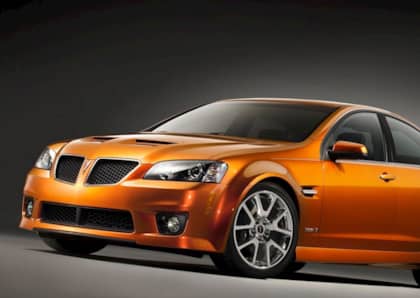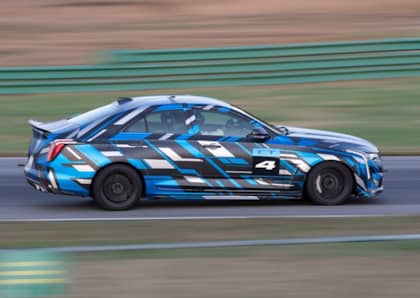Cadillac's 8-6-4 Variable Displacement Engine Was Ahead Of Its Time—And Its Tech
The automotive industry loves to recycle, and we're not just talking about turning soda cans into body panels or slapping once-glorious nameplates onto pedestrian commuter cars. Technology, too, often requires a reheat before it ultimately gains acceptance from drivers—or you know, actually works as intended. For all of its collective industrial muscle and enormous R&D budgets, the auto biz has often been guilty of trying to run before it could walk when it comes to marketing both innovative features and the occasional weird gadget to the mainstream.
Variable displacement technology is a perfect example. With modern engines essentially a delicate, computer-controlled ballet of sensors, valves and actuators whirring away under the hood, it's become relatively simple to write the kind of software necessary to cut fuel to half their cylinders in a bid to save drivers money at the pump.
It's an idea that's been around since the early 1900s, but until ones and zeros called the shots, only a handful of car companies made an effort at bringing this idea to the masses—and of those, just one rolled the dice on full-blown production. The story of the Cadillac 8-6-4 engine is one that touches on both the brand's hubris and its desire to connect with customers it was convinced were demanding technology so advanced that not even General Motors knew how to build it.
Seems to Check Out…
The Cadillac L62 V8 was standard in every model it made for the 1981 model year (except for the Seville, where it was an optional replacement for the also-terrible diesel V8), and on paper it looked like a winner. The Eaton-designed, throttle body-dependent fuel management system on the 6.0L mill was intended to cut out either two or four cylinders, depending on how much load it was under, hence the name 8-6-4—and promised a 30-percent improvement in fuel mileage compared to older drivetrains.

It accomplished this by pairing a microprocessor with a series of sensors that monitored everything from intake manifold pressure to engine speed to coolant temperature, and once it determined that the car was cruising and acceleration needs were modest, it would activate a solenoid that would mechanically lock the rocker arms, preventing the camshaft from operating the valves in the cylinders that were no longer needed. Compressed air inside the cylinders themselves was intended to cushion out any misfiring sensations that might make their way into the passenger compartment.
Failure to Launch
Almost immediately, there were dark clouds on the horizon. The Eaton-GM partnership had dramatically underestimated the computational power required to keep up with the sensor readings spewing forth from the L62 when operated in the real world. While literature of the era bragged of "300,000 calculations per second" from the computer chip in charge, this figure would prove to be woefully inadequate to keep pace with what was actually happening inside the motor.
The problems were legion. The rocker control system wasn't quick enough to respond to the driver's right foot in a timely manner, whether accelerating or decelerating, which lead to delays in power production that made the engine impossible to drive smoothly. The deactivation and fuel injection systems crossed wires to the point where neither really knew what state the motor was in, which meant that the throttle-body design was often either sending too much or not enough fuel into the motor for the number of cylinders that were actually in use. Certain cruising speeds would even throw the processor into a tizzy where it would hunt between cylinder counts, going back and forth like an automatic transmission that couldn't quite select the proper gear for the situation at hand.

The Cadillac 8-6-4 came with a gauge on the dashboard called the MPG Sentinel that would report on how many cylinders were currently pulling duty—but it turned out to be an entirely unnecessary readout given that drivers were instantly alerted to how many pots were firing by the near-constant hesitation and lurching associated with the deactivation process. All for a paltry 15 percent real world boost in miles per gallon.
Fun fact: Due to the throttle body injection design, fuel would also pool on top of the intake valves during longer periods of steady-state cruising, only to dump back into the cylinder when they eventually opened up again.
A Cautionary Tale
Unlike other GM drivetrain snafus of the same era, the response from Cadillac was swift. After attempting 13 software updates with positive improvement in terms of drivability, the 8-6-4 design was quickly retired after a single model year. The L62 was replaced with a smaller 4.1L V8, while those customers who decided to keep their '81s had the cylinder management system permanently disabled, keeping the engine running on eight cylinders for the remainder of its natural life.
In many ways, Cadillac's L62 experiment was prophetic. Variable displacement is now common and well-executed, across a wide range of vehicles at a variety of price points. Unfortunately, that word "experiment" is also an apt description of the General's willingness to rush an unproven technology into dealerships where buyers became its lab rats—a strategy that cost the Cadillac brand both prestige and loyalty moving through the rest of the decade.
It's also a lesson that the industry as a whole hasn't entirely learned. There are numerous parallels between the 8-6-4 disaster and the current push to load vehicles with semi-autonomous driving features, technologies that are currently unreliable, in some cases unpredictable in the behavior, and generally incapable of processing inclement weather. The desire from car companies to overreach their grasp in the name of differentiating one brand from the next is still very much alive in the 21st century.











